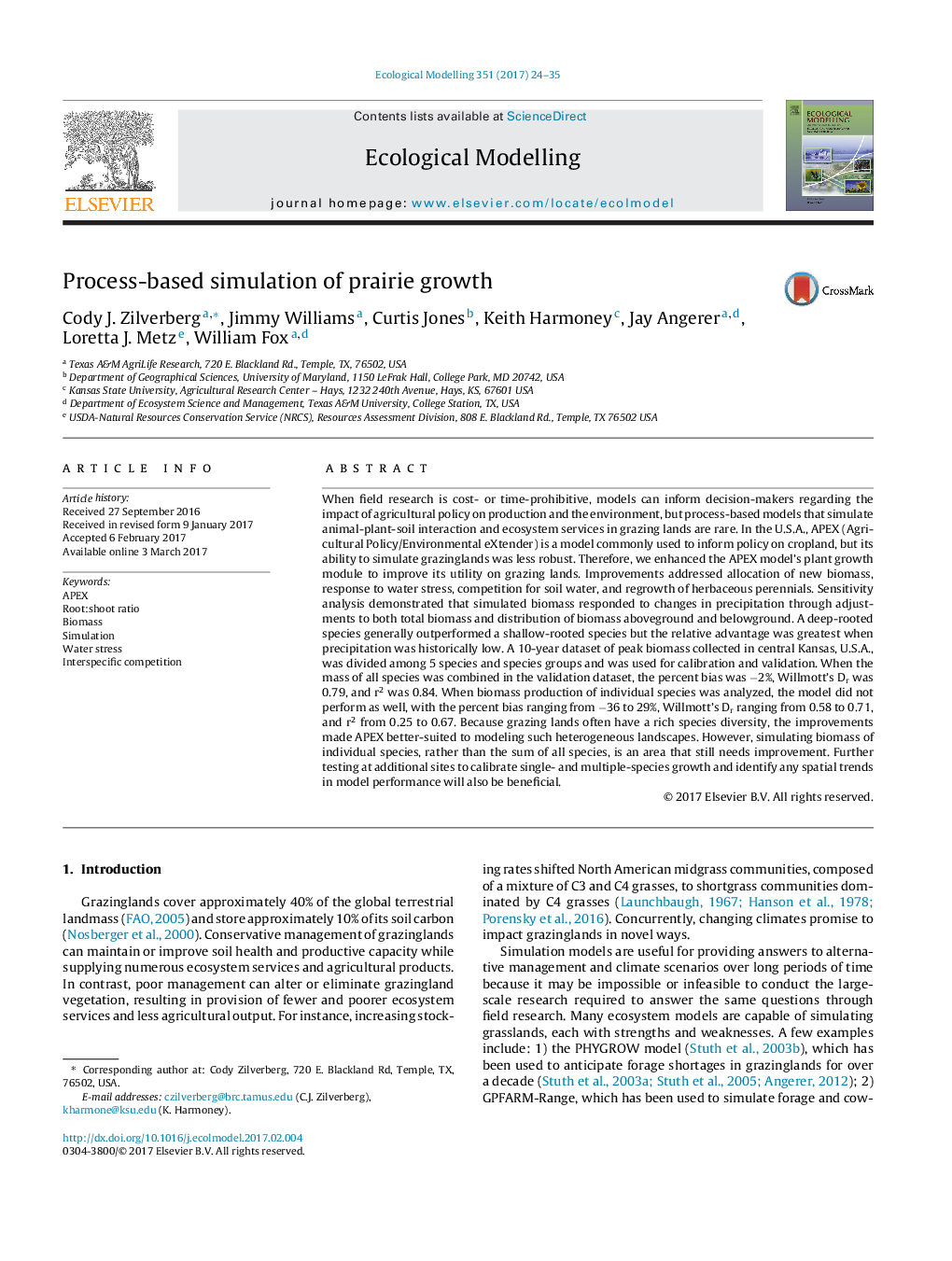| کد مقاله | کد نشریه | سال انتشار | مقاله انگلیسی | نسخه تمام متن |
|---|---|---|---|---|
| 5742217 | 1617396 | 2017 | 12 صفحه PDF | دانلود رایگان |
- The process-based APEX model was modified to improve simulation of grazing lands.
- Changes addressed allocation of biomass, water stress, water uptake, and regrowth.
- Simulated biomass was sensitive to changes in climate and rooting depth.
- Aboveground biomass of a Great Plains plant community was accurately simulated.
- Simulation of community biomass was more accurate than individual species.
When field research is cost- or time-prohibitive, models can inform decision-makers regarding the impact of agricultural policy on production and the environment, but process-based models that simulate animal-plant-soil interaction and ecosystem services in grazing lands are rare. In the U.S.A., APEX (Agricultural Policy/Environmental eXtender) is a model commonly used to inform policy on cropland, but its ability to simulate grazinglands was less robust. Therefore, we enhanced the APEX model's plant growth module to improve its utility on grazing lands. Improvements addressed allocation of new biomass, response to water stress, competition for soil water, and regrowth of herbaceous perennials. Sensitivity analysis demonstrated that simulated biomass responded to changes in precipitation through adjustments to both total biomass and distribution of biomass aboveground and belowground. A deep-rooted species generally outperformed a shallow-rooted species but the relative advantage was greatest when precipitation was historically low. A 10-year dataset of peak biomass collected in central Kansas, U.S.A., was divided among 5 species and species groups and was used for calibration and validation. When the mass of all species was combined in the validation dataset, the percent bias was â2%, Willmott's Dr was 0.79, and r2 was 0.84. When biomass production of individual species was analyzed, the model did not perform as well, with the percent bias ranging from â36 to 29%, Willmott's Dr ranging from 0.58 to 0.71, and r2 from 0.25 to 0.67. Because grazing lands often have a rich species diversity, the improvements made APEX better-suited to modeling such heterogeneous landscapes. However, simulating biomass of individual species, rather than the sum of all species, is an area that still needs improvement. Further testing at additional sites to calibrate single- and multiple-species growth and identify any spatial trends in model performance will also be beneficial.
Journal: Ecological Modelling - Volume 351, 10 May 2017, Pages 24-35
